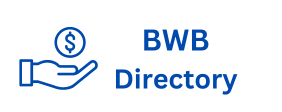Brazil, a rapidly evolving nation with a booming economy and vibrant culture, is also at the forefront of technological advancements. As the country continues to embrace digital transformation. However, its numbering strategy plays a pivotal role in enabling seamless communication and efficient resource allocation. This article explores Brazil’s current numbering landscape, the challenges it faces, and the potential strategies for shaping its future numbering infrastructure.
1. Current State of Brazil’s Numbering System
1.1 Geographic Numbering Plan
Brazil’s current numbering plan is based on a geographic numbering scheme, where phone numbers are assigned based on their geographic location. This system consists of a 2-digit area code followed by an 8-digit subscriber number. However, while this approach has served Brazil well for many years, it faces limitations as the country’s population and telecommunications infrastructure expand.
1.2 Mobile Numbering
Mobile phone numbers in Brazil follow a similar structure, with a 2-digit area code and an 8-digit subscriber number. However, there have been recent changes to accommodate the growing demand for mobile services, including the introduction of additional digits for certain regions.
1.3 Challenges and Limitations
Despite its established framework, Brazil’s numbering system faces several challenges:
Number Exhaustion: As the country’s population and telecommunications usage increase, there is a risk of running out of available phone numbers within certain area codes.
Inefficient Resource Allocation: The geographic numbering Italy Phone Number Data scheme can lead to inefficient resource allocation, as some areas may have excess capacity while others face shortages.
Lack of Flexibility: The rigid structure of the geographic numbering plan can limit innovation and hinder the development of new telecommunications services.
2. Emerging Trends and Future Directions
2.1 Number Portability
Number portability, which allows subscribers to retain their phone numbers when switching service providers, has become increasingly Brazil Phone Number Data important in Brazil. This feature provides consumers with greater choice and flexibility, while also promoting competition among telecommunications operators.
2.2 Unified Communications
Unified communications (UC) is another trend gaining traction in Brazil. UC integrates various communication channels, such as voice, video, messaging, and collaboration tools, into a single platform. This can simplify communication and improve efficiency for businesses and individuals.
2.3 Internet of Things (IoT)
The Internet of Things (IoT) is revolutionizing various industries, and Brazil is no exception. As IoT devices proliferate, there will be a growing need for unique identifiers and numbering schemes to support their connectivity and communication.
3. Potential Strategies for Brazil’s Future Numbering Infrastructure
3.1 Numbering Plan Reform
A comprehensive review of Brazil’s numbering plan may be necessary to address the challenges it faces. This could involve introducing new numbering formats, expanding existing area codes, or implementing a hybrid approach that combines geographic and non-geographic numbering.
Conclusion
Brazil’s future numbering strategy is crucial for its continued digital growth and economic development. By carefully considering the challenges and opportunities AOL Email List ahead, the country can adopt a flexible and innovative approach that meets the evolving needs of its citizens and businesses. A well-designed numbering infrastructure will not only enable efficient communication but also foster innovation and drive economic prosperity.



